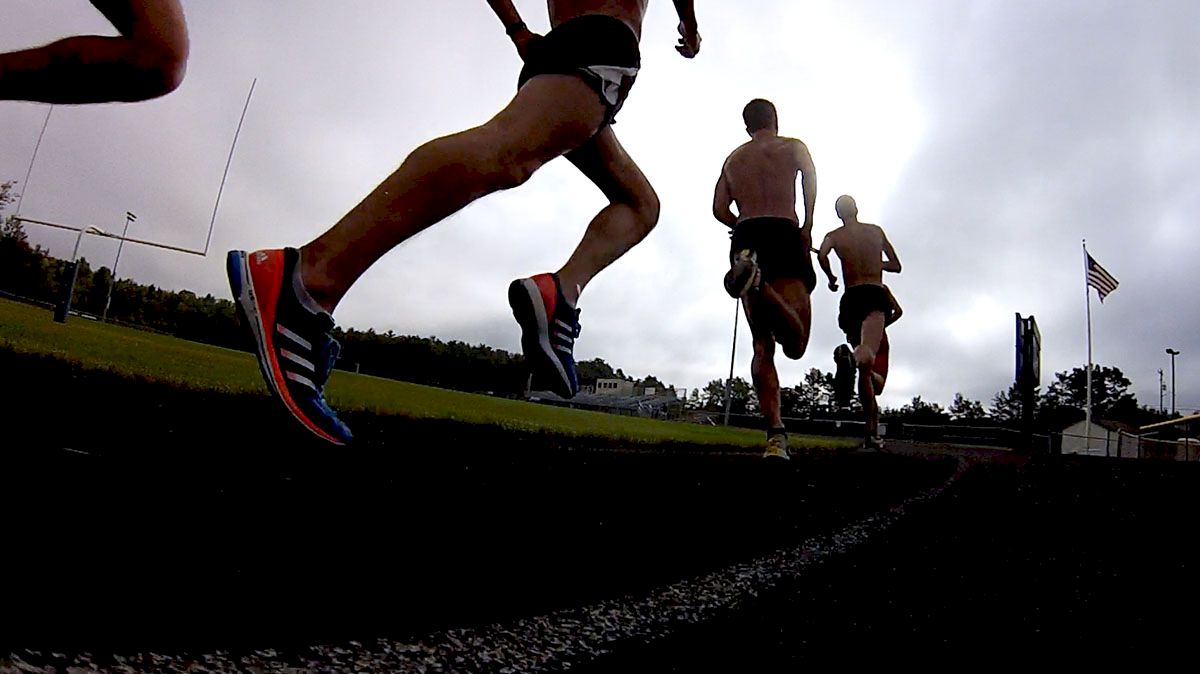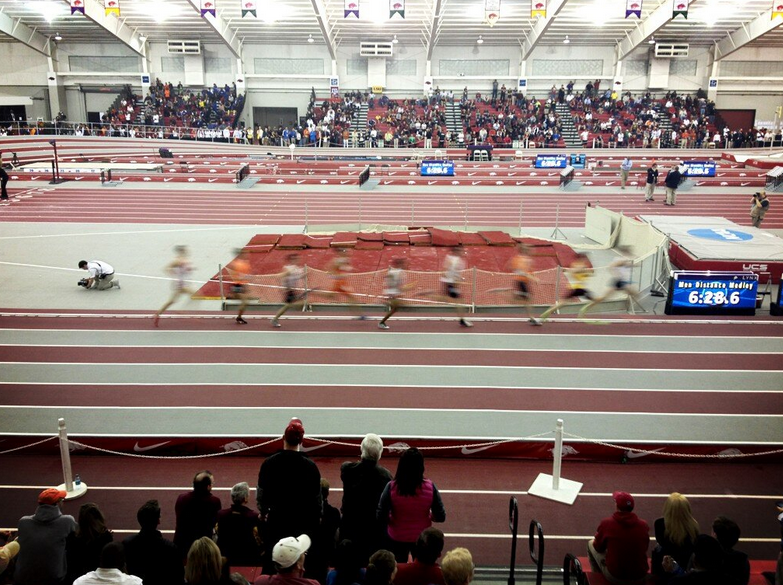The Thrill and Illusion of the Men's DMR
The Thrill and Illusion of the Men's DMR

The group that had survived the war of attrition that was the first day of NCAA Indoors was Flotrack (still uploading videos), the Princeton DMR (drug testing), and Letsrun (still writing).
The DMR capped off an incredible evening that brought the Fayetteville crowd to their feet despite their Razorbacks being out of it.
But what about the event itself?
Earlier this winter, we argued that the DMR is one of the most exciting events and should be run more often. No other event offers the unique blend of four different
Not everyone shared our excitement. The guys over at Letsrun argued that the DMR should be replaced with the 4x800m. It’s not only more commonly run, but the DMR is an illusion of an event because no matter what, it always comes down to the anchor leg.
This is when the expert chimed in. The coach of the newly crowned NCAA men’s DMR champions, Princeton’s Jason Vigilante, stopped pacing the track and made his way up the empty stands to the press box to ask a then rhetorical question.
“In the last few years,” he said, “what has been the split for the 1200m leg for the winning team?”
No one knew for certain, but based on the context of the conversation we were having amongst ourselves, we all agreed on a safe guess of 2:57.
It’s not that we were trying to stay at the Randal Tyson Track Center all night, but Vig had piqued our interest and even though we knew he was right, we wanted to see for ourselves.
In the last three years, the winning relay in the men’s DMR had a leadoff leg of 2:57.x. The two years prior, the winning squad’s opening legs both dipped under that mark. So what's the secret formula for a winning relay?
| Year | Team | Name | Split | Overall Time | Fastest Split |
| 2012 | Notre Dame | Johnathan Shawell | 2:57.46 | 9:35.48 | N/A |
| 2011 | BYU | Brian Weirich | 2:57.28 | 9:29.28 | Abdi Hassan - 2:56.58 |
| 2010 | Oregon | A.J. Acosta | 2:57.04 | 9:36.87 | Mark Matusak - 2:54.68 |
| 2009 | Oregon | A.J. Acosta | 2:56.55 | 9:29.59 | Jacob Hernandez - 2:54.05 |
| 2008 | Texas | Jacob Hernandez | 2:54.20 | 9:32.04 | N/A |
Looking at the splits and finishing time, both arguments are correct. In a sense, the DMR is an illusion because there is no direct correlation between a quick fast first three legs and a blazing overall time.
In the case of the DMR, like most championship races, the pace will dawdle and the relay will resemble more of an accordion as more and more teams can get back into the race before the final 200m.

Three and a half legs later, it's still up in the air.
But that doesn’t mean it’s not an interesting race. The DMR is the rare occasion where overconfidence from the leaders and tenacity from the chasers can create mayhem over the final stages of the race.
It may be based on false hope (an illusion perhaps?!), but it’s still thrilling to watch teams that were once completely out of the picture have an outside shot of actually winning.
What does this mean in terms of team strategy? You really just need a baller slash shot caller on the anchor leg.
If Princeton’s Peter Callahan was within three seconds of the lead at the bell, was there any question that the Tigers would take home yet another middle-distance relay title?
Given that range, did the first three legs matter? Of course. But are they vital to the relay's success? Not as much. In year's past, it's taken a stud on the anchor to bring home a national championships.
| Year | Team | Name | Time |
| 2012 | Notre Dame | Jeremy Rae | 4:00.67 |
| 2011 | BYU | Miles Batty* | 3:56.14 |
| 2010 | Oregon | Andrew Wheating | 4:01.23 |
| 2009 | Oregon | Galen Rupp | 3:57.08 |
| 2008 | Texas | Leo Manzano | 4:00.76 |
*Note: Indiana's Andy Bayer split 3:53.29. The full splits and results are linked in the table above.
If you’re going to tell me that not a single one of those guys was at the absolute top of their class in their respective year, there’s Nurse Ratched would like to have a word with you.
The best example of of these arguments would be race from 2010. Heading into the anchor leg, California lead with Arkansas and Oregon in pursuit. It looked as if Oregon's Andrew Wheating was going to be unable to defend the DMR title, but then something odd happened.
If Cal and Arkansas had run their normal race, then the lead would have been unassailable. Cal's Michael Coe, who had 7:47 that winter, had a lead of 3.29 seconds over Wheating while Arkansas' Dorian Ulrey's lead was 1.91 seconds.
If Coe would have run 3:58, which was not out of the realm of possibilities, Wheating would have to had run 3:55. That's not unrealistic either, but Cal's odds of winning would have been better.
Instead, Coe split 4:05.84, Ulrey ran 4:03.79, and Wheating came home with the win in 4:01.23.
If you have the lead, then it makes sense to just run your own race rather than relax and let the field come back on you. Just ask the Michigan women.
Despite the slow pace, was 2010 not an exciting finish? We still reference the race today, especially after analyzing the pace of the men's mile.
The first three legs of the DMR may be an illusion, the entire race may be an accordion, but it’s still exciting.
Just ask the Princeton faithful.